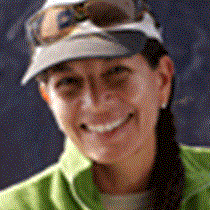Isabela Island
Today was a very special day. We visited Isabela, by far the largest island in the Galápagos group — it accounts for half the total surface area of the archipelago. This island was created by the fusion of six enormous shield volcanoes, which give rise to the characteristic “seahorse” shape of the island.
After we spent the night off Punta Espinoza, we navigated early in the morning a short distance across the Bolivar Channel to reach Urbina Bay, at the base of Alcedo Volcano. Urbina Bay is a site of great geological and historical interest. In 1954, 1.5 square kilometers of the marine reef off the coast was uplifted almost instantaneously, by as much as 16 feet (5 meters)!
We explore this site by hiking about 2 miles (3km) along the coastline and up into the interior of the island or just walking about a half-mile inland. Not only did we see the evidence of the uplift that happened 57 years ago, but we also saw the famous and huge colorful land iguanas.
We were very lucky to not only see many land iguanas, but giant tortoises, too. We don’t always have the chance to see them in wild as most of them live in the highlands, but since there is food and water in the lowlands at this time of the year, tortoises enjoy roaming around. Tortoises of all ages and sizes, males, females and young ones were around, completely unaware of our presence…
Once we finished our hikes, everyone had the chance to swim from the beach, and once again, with a lot of luck, as we had penguins and cormorants swimming around us.
Lunch was a delight, and then we had a very interesting presentation about Darwin, where Jonathan, our naturalist, explained the facts of Darwin’s famous theory of evolution through natural selection.
The afternoon included a trip back north to visit a historic bay known as Tagus Cove, where wayfarers over the centuries have sought and found a sheltered harbor and access to the island. Some interesting historic graffiti can be found near the landing, and many stories can be told of visitors to this protected cove. This area of Isabela is one of the places visited by Charles Darwin in 1835.
Here we first explored the cove by kayaking or snorkeling, and then later on some guests took a strenuous but scenic hike up the rim of a tuff cone overlooking Darwin's Lake. Others of us enjoyed a Zodiac ride along the fascinating coastline where penguins, flightless cormorants, pelicans and other surprises were waiting.
Tortoises approaching us without any fear, Galápagos penguins swam among the snorkelers, sea lions following the Zodiacs…
Nature comes to you in Galápagos!




